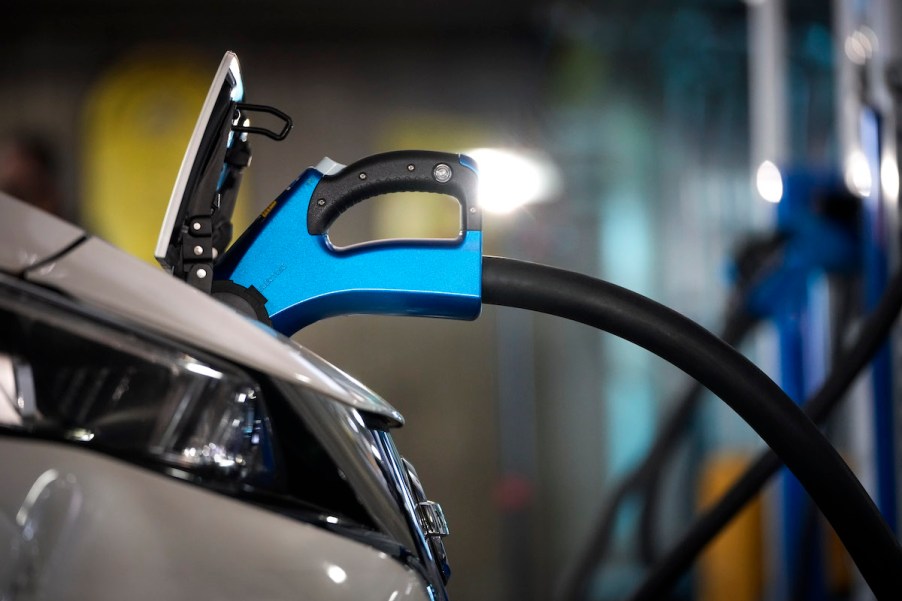
Experts Disagree Whether It’s Safe to Use an Extension Cord to Charge Your EV
One of the most convenient perks for EV owners is charging their vehicles at home. They don’t have to deal with crowded filling stations or pay outrageous gas prices. The cost of charging an EV depends on where you live, but at least electricity doesn’t typically experience drastic price spikes.
Still, not everyone has the space at home to install a charger. But fortunately, any EV driver can charge their car if they have access to a wall outlet. An extension cord can help you reach most wall outlets, but is that safe?
The potential dangers of using an extension cord to charge your EV

A Level 1 charging cord, standard on almost all EVs, can plug into any household outlet. That means EV owners don’t even have to invest in an expensive charging station to enjoy home charging. If the cord doesn’t quite reach the vehicle, you can link up one or more extension cords.
However, EVBox says many people don’t use extension cords safely. Indoor extension cords are the cheapest types to purchase, but you should never expose them to the elements for long periods. They’ll eventually break down, causing a risk of sparking or fire.
Some people link three or more extension cords to get a better reach, which is also a safety risk. Connecting extension cords increases their overall resistance, so they get very hot. That could cause the insulation coating to wear away, resulting in fire or electrocution risks.
Additionally, charging an EV is a lot for a standard wall outlet to handle compared to a typical appliance. If your home has outdated sockets or wiring, you could risk overheating an electrical component. Therefore, EVBox recommends not using a wall outlet as a long-term charging solution.
When you have to charge your vehicle at home, use a CEE17 socket. They are reinforced to prevent short circuits. Plus, they charge your EV a little faster.
Consumer Reports isn’t overly concerned about extension cords
Consumer Reports seems to have no qualms about using an extension cord to charge an EV, even with a standard 110-volt outlet. The consumer site even notes that extension cords can be convenient for apartment dwellers. You could use a long extension cord if you live on the second floor with a window facing the parking lot.
Still, CR says to be on the safe side and use the NEMA charging cord that came with your EV. Manufacturers have thoroughly tested these cords to prevent overcurrents and power overloads. You should use only heavy-duty extension cords with more insulation to charge an EV outside.
The safest extension cords you can buy to charge your EV
Using an extension cord to charge your EV is relatively safe if you use the proper equipment. EVAdept recommends a NEMA charging cord but also suggests using a J1772. Those cords can connect to heavy-duty CEE17 outlets.
J1772 charging cables are a little heavier than NEMA cords but also cost more. However, J1772 models have overheating protection and more resistance to water. You can even submerge some of these cords in water for up to 30 minutes with no adverse effects.
Still, EVAdept cautions users about the dangers of some extension cords. If you keep the cords connected for days or use ones with mismatched power outputs, you might run into problems. To be on the safe side, never use an extension cord (or a daisy chain of lines) exceeding 100 feet.


